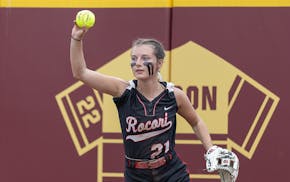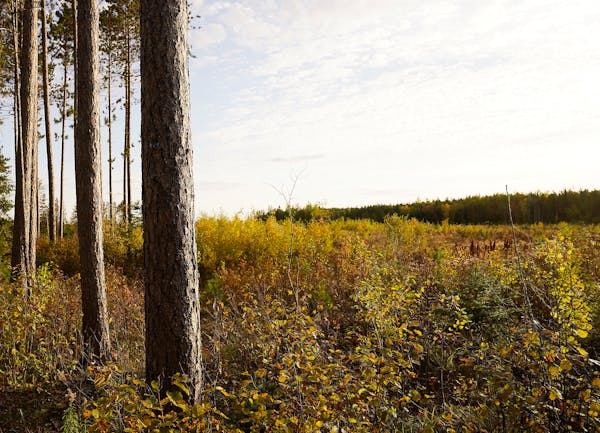Minnesota conservationist Don Arnosti has studied the state's intensified logging program and its impacts on wildlife habitat since the beginning.
He sat on an advisory committee for the Department of Natural Resources (DNR) while the agency forged what is known as the Sustainable Timber Harvest Initiative — a 10-year plan now at its midpoint that expanded timber sales on state wildlife management areas (WMAs). The program has drawn vehement objections from DNR's own wildlife managers as destructive to habitat. Many of their complaints were validated by U.S. Fish and Wildlife Agency (FWS) field auditors.
When the DNR forged an agreement last week with FWS to address the discord, Arnosti viewed it as a step in the right direction to fix a flawed system. His reaction is part of a mixed bag of comments from various stakeholders in the outdoors world.
"It's a positive thing,'' said Arnosti, an environmental consultant who once headed the Minnesota division of the Izaak Walton League.
He said it's unusual for the federal agency to take a hands-on role in a state agency that receives fish and game grant money. But now the joint training and monitoring agreement announced Thursday puts the DNR and FWS in close contact on an important issue, Arnosti said.
"I think it's good they are paying attention to the fact that there's a there there,'' he said.
But Arnosti also said he's concerned the five-point agreement made by FWS Regional Director Charlie Wooley and DNR Commissioner Sarah Strommen doesn't change procedures in the timber harvest program or lower its annual timber sale quota of 870,000 cords.
For instance, he said, DNR's area wildlife managers once had the final say on what timber stands on their respective wildlife management areas could be harvested. But they lost that authority under the Sustainable Timber Harvest Initiative. Now, if a manager wants to save a computer-selected timber stand from the axe, he or she must offer a similar stand as a replacement.
"That's wrong,'' Arnosti said. "That's not how you achieve good wildlife habitat by whittling it all down.''
Wooley and Strommen said they've agreed to start joint training of DNR employees and joint monitoring of DNR logging sites to ensure that all cutting serves a wildlife purpose. DNR receives millions of dollars a year in federal fish and game grant money derived from hunters' license purchases and other sources to acquire and manage those lands and keep them accessible to sportsmen and women. Under other parts of the new agreement, the DNR will reaffirm its commitment to those requirements and clearly define the roles employees must play to stick to the rules.
Arnosti said he supports another aspect of the new agreement that requires DNR to catch up on years of tardiness in writing master plans for the future of major wildlife areas. Public input in the making of those plans could help keep political pressure from the wood products industry in check, Arnosti said. The industry's push for greater availability of state timber is what led to the Sustainable Timber Harvest Initiative in the first place, Arnosti said.
"Trust has been broken and this seems to put us in a trust-building phase,'' Arnosti said of the agreement.
Rick Horton, executive vice president of Minnesota Forest Industries, applauded the DNR and FWS "for coming together with a common-sense approach to managing forested wildlife management areas.'' Horton said the planned training for DNR staff will ensure everyone's on the same page regarding agency priorities.
Like Arnosti, Horton likes DNR's commitment under the agreement to finally catch up on overdue planning that would set the future direction of WMAs. Forest industry partners look forward to participating, he said.
Horton said the FWS deserves credit for taking the time to learn more about forest management. The agency largely focuses on wetlands and grassland management, he said, so many common forestry practices are foreign to their staff. "Everything we do in the forest, including doing nothing at all, benefits some animals and is detrimental to others,'' Horton said.
The industry manages things "to maximize wildlife diversity — which means creating both young and old forests of all forest types,'' he said.
Bruce Anderson of the Minnesota chapter of the Wildlife Society said he, too, appreciates the DNR's commitment to complete WMA master plans. The planning should be led by WMA managers, he said. And if a decision is made to change course on timber harvest plans, he said, the planning decision should supersede prior plans.
Anderson took exception to one of the DNR's pledges in the new management agreement. The state agency said it will "reaffirm'' its commitment to the wildlife-first covenants required when accepting federal fish and game funds. Had the DNR honored those requirements instead of allowing purely commercial cuttings, DNR wildlife managers in the field would never have protested and the new joint-agency agreement would not have been needed, Anderson said.
Gretchen Mehmel of Baudette is one of 28 DNR wildlife area managers who publicly protested the Sustainable Timber Harvest Initiative for cutting trees on wildlife management areas merely to meet industry-friendly cordage quotas.
Recently retired from her leadership post at Red Lake WMA, she said the new agreement "does nothing to change anything.'' Four of the five points in the agreement reaffirm existing DNR language and plans, she said. The fifth point about field monitoring is already covered in the form of FWS audits that comply with federal law, she said.
Said Mehmel: "For this issue to be resolved, the cord quota has got to be addressed and fisheries and wildlife managers have got to have the ability to say no to timber harvests on lands they manage.''

Twins open homestand with loss to Blue Jays, Jeffers ejected after critical call

Vikings GM talks to the Star Tribune about the team's 2025 outlook, McCarthy's trajectory

Champlin Park turns a big moment into the Class 4A softball championship

Mounds View's Soren Swenson wins Class 2A boys tennis singles title; St. Paul Academy sweeps in 1A



